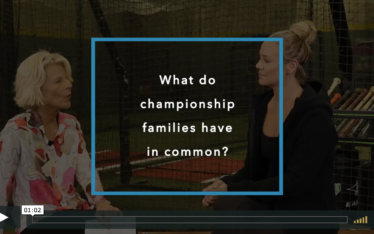Using Data To Become a Better Player
Derek and Joanne Allister are parents of successful daughters who navigated the very softball journey that many families are involved in today. They are also the owners of OnDeck Softball, a company that has helped thousands of young softball players. ONE Softball views them and OnDeck Softball as a trusted source for data and we value their experience as softball parents.
The phrase “you can manage what you can measure” holds true in softball. Identify your strengths and your weaknesses and make plans to work on both that include tracking and measuring progress. Having an idea of your standing relative to your age group is a great place to start.
In this article, Derek Allister, owner of On Deck Softball, talks about understanding your skills as a player through data, and making a plan for a future based on objective measurable stats.
The analytics that OnDeck Softball has compiled over the last 4+ years have helped the serious athlete take stock of her softball athleticism, identify strengths and weaknesses, and create a baseline from which to work. While the battery of tests seems rather daunting at times, the results offer the player and her family a really simple and solid snap-shot of the player’s athleticism. They should embrace this data and use it to make the improvements in their game.
To come close to reaching her true potential, every player needs to fully understand her strengths and weaknesses as both a player and an athlete. KJ, from OnDeck Measurements (ODM), has a favorite quote, “You can’t just continue to work on strengths. You have to work on weaknesses until they become strengths.” Yet we often see players persisting in only maintaining their strengths and not confronting those parts of their game that hold them back from their full potential.
For example, some players are told that “they have a strong arm” or conversely, “they have a weak arm.” But what does that mean? ODM can tell you that the average D-1 player throws the ball 62-64 MPH. So, if a 9th grader throws the ball 62 MPH, she obviously has a D-1 arm. If she is throwing it 52 MPH, that needs to improve and she can either embrace that data or reject it. The wise player will see that data and look at the problem critically. Is there a mechanical issue that needs to be addressed? Is there a lack of strength and physical maturity? If the mechanics are sound and the player is mature and strong, then does her position allow her to be successful with the arm she has? In any case, the wise decision might be to address this weakness and correct it, as opposed to putting one’s head in the proverbial sand and ignoring it.
It is natural to pose the following question. Can the player who throws the ball 52 or 53 MPH still be successful? The answer is a resounding YES. There is no question about that.
One of the best shortstops coming out of the 2007 class wrestled with that very issue. She only threw at 53 MPH and yet ultimately became a two time All American in college. However, there are two very important things to know. First, she was one of the best hitters in the country over her four years in college. And we all know that hitting is KING in softball. Secondly, SHE NEVER PLAYED SHORTSTOP IN COLLEGE. She was moved to first base because she didn’t have the arm to make the plays at the level at which she was playing.
It is logical that when given a similar defensive skill set, the player with the stronger arm can throw out more runners than the player with the weaker arm. A player who can throw out more runners is obviously a more valuable defender to the college coaching community than the player who cannot. While simplistic, this scenario offers valuable insight to a player’s particular situation and the path she should look to take moving forward.
As they said in the The Hunger Games, “Let the odds be ever in your favor.” So by knowing that your 8th grade daughter’s arm is weaker than it needs to be, it would seem wise to NOT rely upon your daughter becoming one of the best hitters in the country. It would seem wise to NOT hope that your daughter’s future college coaches will recognize her natural talent and be able change her position. In my mind, the wisest move for any young player who only throws it 52 MPH is to embrace that knowledge, fix the mechanical issues if necessary, and get stronger. In that way, her arm will never hold her back from being the player she wants to be.

Republished with permission from OnDeckSoftball.net



About The Author
Derek Allister
Derek Allister is the founder and owner of OnDeck Softball and the developer of the OnDeck Measurements player assessment tool. With over 30 years of involvement in fastpitch softball and having seen tens of thousands of players of all ages and ability levels, Derek is among the most well respected evaluators of talent in the country. Visit ondecksoftball.net for more information on the ODM system and skill measurement.